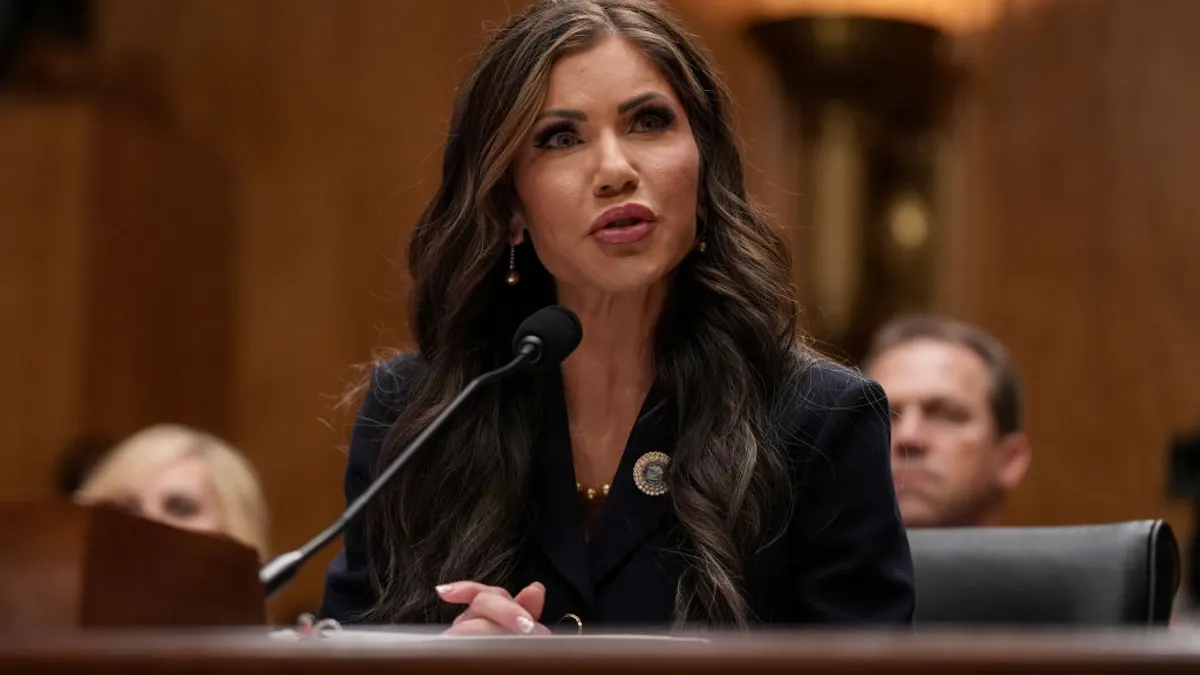It was 2014, and the company where Danielle Bowen worked as a temporary employee was considering her for a full-time administrative position. But there was one problem: her hair.
"It's not corporate," Bowen said she was told. Bowen's hair was in locs, a natural hairstyle, she told HR Dive. It was as if company management was telling her "you don't quite fit the image that we require here," Bowen said. Ultimately, she didn't change her hairstyle and she wasn't offered the position. Instead, she was asked to train her blonde-haired replacement.
More than a hairdo issue
At the time, Bowen had no legal recourse; making employment decisions based on a candidate's hair was and is sometimes legal. But that is changing in some states. In 2019, California became the first state to ban discrimination based on hairstyles by passing the CROWN Act (Creating a Respectful and Open World for Natural Hair), which bans policies that discriminate against those with natural hairstyles. New York and New Jersey have also signed their own versions of the Crown Act into law, and it's been introduced in several other states.
It's worth noting that Title VII of the Civil Rights Act of 1964, a federal law, does prohibit employers from enacting neutral policies that exclude a protected class of employees. If the test impacts a group of employees based on race, color, religion, sex or national origin, the employer must be able to show the test is job related and consistent with business necessity.
When employers have policies banning employees from wearing certain hairstyles such as locs or a TWA (teeny weeny Afro) to work, it's not just hair discrimination; it's race discrimination, Devjani Mishra, employment law attorney for Littler Mendelson, told HR Dive. Rules that impact people of a particular race is discriminatory in effect, she said. Natural hairstyles are traditionally associated with black people, including African Americans, Africans and Caribbeans, she said.
Specific grooming guidelines can discriminate against more than race, Alex Granovsky, a labor and employment attorney at Granovsky & Sundaresh, told HR Dive. Rastafarians and Sikhs also allow their hair to grow naturally, so a grooming policy that prohibits long hair could discriminate against certain religions, he said. Requiring employees to be clean shaven may aggravate skin conditions, resulting in disability discrimination, added Mishra.
Why do companies have hair policies?
Organizations have long had grooming policies. Some, such as the New York Yankees, are famous for having rules that reflect the culture of the organization. The policies may attempt to draw the fine line between corporate image and personal expression, Granovsky said. "If you want to have a giant punk rock mohawk, it can be distracting if you work in a medical office," he said.
Sometimes companies have policies for health or safety issues, Granovsky added. For example, a company may require employees keep short hair if they work around food, flames, machinery or chemicals.
Companies with policies that restrict employees from wearing natural hair may not have realized the toll that straightening could take, Mishra said. "In prior years, we were more unaware of what the ramifications are having someone go through chemical or heat treatment to meet a dress code," she said. "That could be unhealthy and cause all sorts of issues down the line."
Although some companies may not mean for their hair policies to be discriminatory, others may have less than innocent intentions, Granovsky said. "Companies have wised up. You're never going to get the memo 'Hey, let's fire the black person for being black or let's fire the old people,'" he said. Instead, companies will use code phrases like needing "fresh blood" or "people who are up on the new tech" — language that does not necessarily use ageist words but implies an ageist meaning, he said. "It's the parallel with hair," he said.
Be upfront with anti-discrimination policies
Policies that protect workers from hair-based discrimination are necessary, said Rosalind Chow, associate professor of organizational behavior and theory at Carnegie Mellon University's Tepper School of Business. "Lots of research indicates that certain racial groups are discriminated against because of their appearance," she told HR Dive in an email. Having an explicit policy helps tackle the negative consequences minority groups face when they don't conform with the preferences of the majority group, she said.
Beyond the law, when companies introduce their anti-discrimination hair policy, they should not just say what it is, but also the reason for having it, Chow said. "If the intent is to convey inclusivity, then the policy should specifically state that this is the intent," Chow said. "By having an explicit policy stating that the intent is to encourage individuals to feel comfortable expressing their authentic selves, the company can convey to minority employees that their choices will be respected and, more importantly, protected. It also conveys to other majority-group members that differential treatment is not allowed."
Keep policies and practices up to date
Companies that have existing dress or grooming policies should review them, Mishra said. A policy may appear to be unbiased, perhaps outlawing hairstyles that exceed two inches above the head. "Even though this is neutral as written and doesn't single out race or religion, someone with curly or coily hair may have hair that extends beyond two inches," Mishra said. In comparison, someone with straight hair could have long hair, but because it was straight, it wouldn't violate the policy.
Although there may be valid reasons for specific restrictions, companies must figure out how to be inclusive and accommodate without compromising safety, Mishra added.
Consider what guidelines are essential, Granovsky said. Evaluate what does and doesn't drive the business. "If you're an auto mechanic and you don't like the receptionist's hair, that's probably a personal thing and not a business thing," he said. Attention to hair discrimination forces us to reexamine where our prejudices lie, Granovsky added. "Hair has been a source of tremendous discrimination, especially for people of color." As such, company leaders should note employee complaints about hair discrimination and look for signs of implicit bias in personnel decisions, Granovsky said.
Workplace changes begin to align
The Crown Act and anti-discrimination hair policies reflect broader changes companies see, Wendy Williams, HR generalist at Duff & Phelps Investment Company, said. As younger generations enter the workforce, they're expecting to be accepted as they are: "They're coming in here and asking 'What are your culture and policies, like your dress code? Can I wear a hat? Can I wear a hijab?'" To be too restrictive means missing out on candidates, she said.
Mishra agreed. "It doesn't make sense to say we're reaching out and being inclusive and want to hire the most qualified people regardless of where they come from, but then we want them all to come here and look the same."
As for Bowen, she is currently an HR administrative assistant in a financial investment company, still rocking her locs undeterred. "I'll continue to show up, perform well and allow my work to speak for me."




















